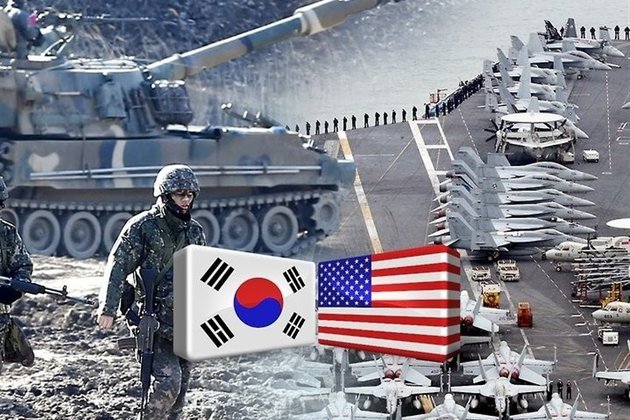As US long-range bombers take part in the penultimate day of air drills, North Korea continues to fire missiles
On Saturday, North Korea fired four ballistic missiles into the ocean as the US deployed two supersonic bombers over South Korea, underscoring the region’s escalating tensions.
According to South Korea’s Joint Chiefs of Staff, four short-range missiles fired from a western coastal area about noon traveled 130 kilometers toward the nation’s western sea.
In response to the joint aerial exercise between the US and South Korea, the North has test-fired more than 30 missiles this week, including an intercontinental ballistic missile on Thursday that prompted evacuation alerts in northern Japan, and flown a significant number of warplanes inside its territory.
On Saturday, the final day of the Vigilant Storm joint air force drills, two B-1B bombers trained with four US F-16 fighter jets and four South Korean F-35 jets. Around 240 warplanes, including fifth generation F-35 fighter fighters from both nations, participated in the drill.
The exercise, which Pyongyang’s military said was a demonstration of US “military confrontation hysteria,” was the source of Pyongyang’s military moves this week, according to the North Korean Foreign Ministry’s statement late on Friday.
In response to any attempts by “hostile forces” to violate its sovereignty or security interests, North Korea, according to the statement, will take the “toughest counteraction.”
South Korea’s Joint Chiefs of Staff said the participation of the B-1Bs in the joint drills demonstrated the allies’ readiness to “sternly respond” to North Korean provocations and the US commitment to defend its ally with the full range of its military capabilities, including nuclear.
B-1B flyovers had been a familiar show of force during past periods of tensions with North Korea.
The planes last flew over the Korean Peninsula in December 2017 during another series of North Korean weapons demonstrations. But the flyovers had been halted in recent years as the US and South Korea stopped their large-scale exercises to support the Trump administration’s diplomatic efforts with North Korea and because of the coronavirus pandemic.
After North Korea increased its weapons testing to a record rate this year, using a rift in the UN Security Council over Russia’s war on Ukraine as an opportunity to boost armaments development, the allies restarted their extensive training.
Such close-range US military displays are opposed by North Korea. Despite switching to conventional weapons in the middle of the 1990s, the B-1B is still referred to as a “nuclear strategic bomber” throughout the text.
In reaction to a succession of North Korean ballistic launches on Thursday, including an ICBM that sparked evacuation advisories and stopped trains in northern Japan, Vigilant Storm, which was initially slated to expire on Friday, was extended by the allies to Saturday.
Thursday’s launches came after the North fired more than 20 missiles on Wednesday, the most in a single day. Those launches came after North Korean senior military official Pak Jong Chon issued a veiled threat of a nuclear conflict with the US and South Korea over their joint drills, which the North claims are rehearsals for a potential invasion.
South Korea also on Friday sent up about 80 military aircraft after tracking about 180 flights by North Korean warplanes inside North Korean territory.
In Friday’s statement, North Korea’s Foreign Ministry said the US and South Korea had created a seriously “unstable atmosphere” in the region with their military exercises. It accused the US of mobilising its allies in a campaign using sanctions and military threats to pressure North Korea to unilaterally disarm.
“The sustained provocation is bound to be followed by sustained counteraction,” the statement said.
North Korea has launched dozens of ballistic missiles this year, including ICBMs and an intermediate-range missile flown over Japan.
South Korean officials said there are indications North Korea in coming weeks could detonate its first nuclear test device since 2017. Analysts say North Korea is attempting to force the US to accept it as a nuclear power and seeks to negotiate economic and security concessions from a position of strength.





